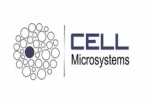Accelerate to discover
Technologies
Type of the news
Brands


































Combination of low-energy X-ray & citric acid to inactivate E.coli, S.Typhimurium, L.Monocitogenes
Combined treatment with 0.5 kGy X-ray and 0.1 % CA significantly decreased biofilm cell counts by 5.10, 4.31, and 3.96 log CFU/coupon for E. coli O157:H7, S. Typhimurium, and L. Monocytogenes, respectively.
2025-12-03
The Path to Clinical Relevance: Moving from Spatial Transcriptomics to Protein Profiling
Spatial biology is a rapidly evolving discipline that advances human health by leveraging imaging technologies. It encompasses research activities ranging from whole-transcriptome profiling to clinically impactful single-protein biomarker tests.
2025-12-02
Genotype-Specific Macrophage Programs in the NSCLC Microenvironment
Understanding cell-cell interactions within the tumor-immune microenvironment is crucial for advancing cancer therapies. Macrophages show highly variable roles in tumor progression and response, yet the drivers of this complexity remain unclear.
2025-11-26
Advances in Biofilm Research: How the Experts are Overcoming Obstacles
There are plenty of areas of interest when working with biofilms. In this article we focus on two major ones: biofilm drug resistance and antibiofilm drug development and the approach one can take in research.
2025-11-19
Join ACCELA at the Flow Cytometry Day, Semmelweis University, Budapest
Join us at a Premier Flow Cytometry event in Hungary! ACCELA is excited to participate in this key scientific gathering, where we’ll present during the Scientific Program on the Cytek Aurora Evo — setting a new standard in Spectral Flow Cytometry.
2025-11-05
Can you solve mouse CT imaging with 50um spatial resolution ?
MOLECUBES, a Bruker Company offers small footprint microCT for mice and rats, which meets most of your needs for in-vivo analysis and doesn't sacrifice the budget.
2025-10-22
Perfusion: The Beating Heart of Single-Cell Biology and Cancer Immunotherapy
Single-cell biology has transformed our ability to uncover cellular diversity and dynamic behavior within complex tissues that are otherwise masked in population-level analyses.
2025-11-24
Preclinical Development for Therapy of Hard-to-Treat PD-L1-Positive Solid Tumors
They developed MDG1015 — CD8⁺ TCR-T cells armored with a PD1-41BB costimulatory switch protein (CSP) that converts PD-L1–mediated inhibition into activation. In vitro, they selectively kill PD-L1⁺ tumor cells while sparing non-target cells.
2025-11-17
Introducing EOS6: High content – live cell analysis inside your incubator
Built to support multiple users and applications, the EOS6 can run up to six microplates in parallel, flask, dishes, slides… Users can schedule experiments at different image acquisition frequencies and magnifications in parallel.
2025-10-24
Elevating Intravital Imaging with AI: Introducing the AI-Image Denoiser
AI-Image Denoiser, our best-in-class, AI-powered image enhancement software designed specifically for high-speed intravital microscopy.
2025-10-21
Development of new albumin‑binding radiotracers for PET imaging of CSF
In this study by Peltoniemi et al., PET/CT imaging using the X-CUBE (CT) and ß-CUBE (PET) was used to non-invasively visualize cerebrospinal fluid (CSF) flow and glymphatic system dynamics in rats.
2025-11-28
Introducing Cytek Aurora Evo – The New Standard for Full Spectrum Cytometry
Join ACCELA for this educational webinar in cooperation with Cytek. The Cytek Aurora Evo system delivers the same high-performance fluorescence capabilities as its predecessors, now enhanced with new features designed to meet the evolving demands.
2025-11-20
Join us in Prague at the upcoming Extra Cellular Vescicles Society meeting
ACCELA is excited to participate in this key scientific gathering, where we’ll present during the Scientific Program and hands-on workshops on the VDO Exoplorer — setting a new standard in Nano Flow Cytometry
2025-11-05
Reanalyze your in-vivo optical images with Aura Software
Aura is a free license software application produced by Spectral Instruments Imaging, a Bruker Company.
2025-10-23
















